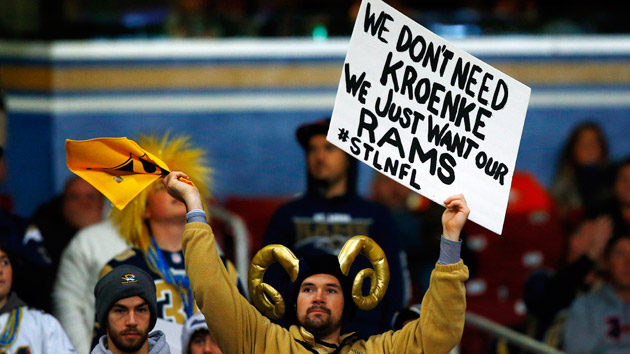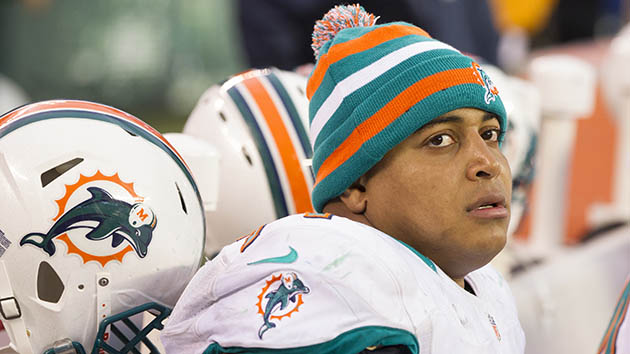
Billy Hurst/AP
For more than two decades, NFL owners seeking to finance new stadiums with public money used Los Angeles as a bargaining chip, threatening to move to the City of Angels if they didn’t get what they wanted. Now St. Louis is losing its team to LA—and it still has years of multimillion-dollar payments left on its last bad stadium deal.
On Tuesday, the league’s owners voted to let the St. Louis Rams move to Los Angeles for the 2016 season and to build what’s supposed to be the NFL’s biggest stadium on the site of a one-time racetrack. (The NFL also gave the San Diego Chargers a year to decide whether to join the Rams or work out a new stadium deal, and promised $100 million to the Chargers and Oakland Raiders if they stay put in their respective markets.) Los Angeles officials already have lauded the Rams’ homecoming as an economic boost to the region; the state-of-the-art stadium in Inglewood, expected to open in 2019, could cost upwards of $3 billion, with the Rams likely playing in the Coliseum until then.
Meanwhile, the city and county of St. Louis will still pay at least $6 million apiece per year until 2021 to pay off bonds sold to construct and maintain the Edward Jones Dome, which opened in 1995. (The Rams paid a meager $500,000 per year to use the dome.) And then there’s the more than $3 million in public funds used to develop a $1 billion riverfront stadium proposal to keep the Rams—a pitch NFL Commissioner Roger Gooddell knocked as “inadequate” and “unsatisfactory.”
St. Louis officials have been quick to note that the city is searching for new tenants for year-round use and would review how much the loss will affect the area’s finances. They won’t, however, be looking for a new NFL franchise: Mayor Francis Slay told reporters Wednesday that the city is turning its back on the league, once and for all.






